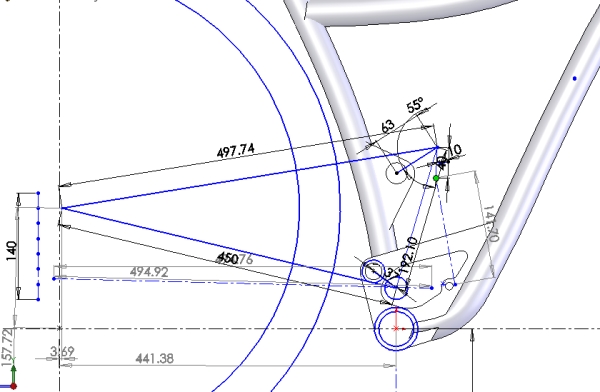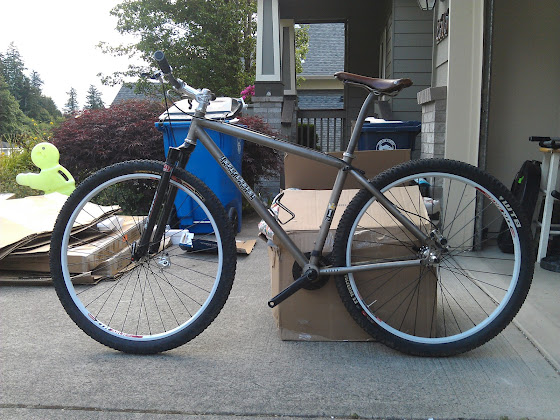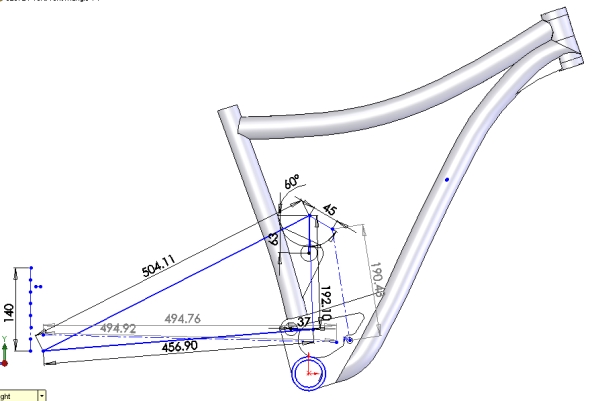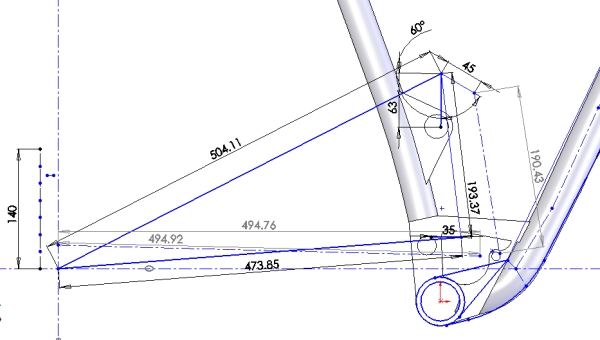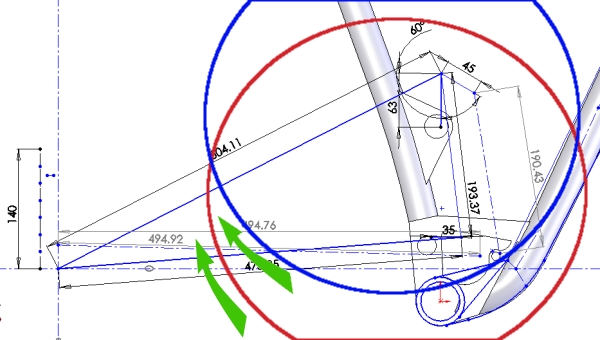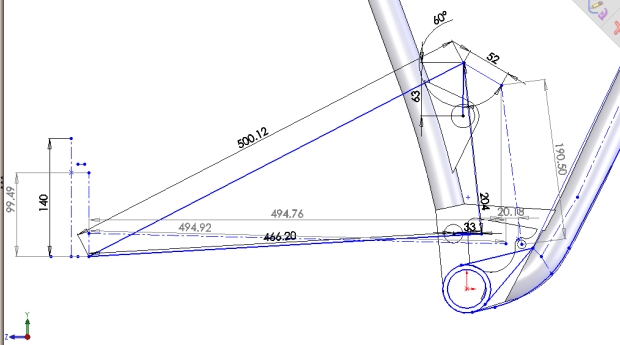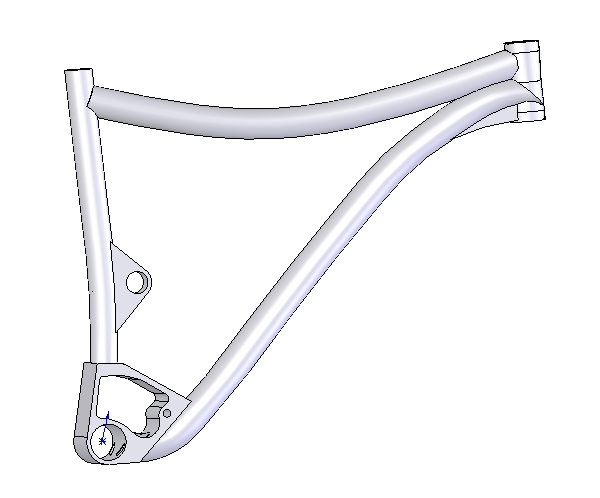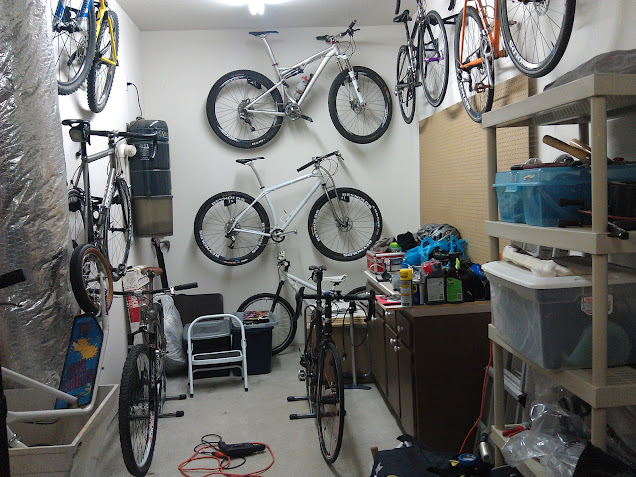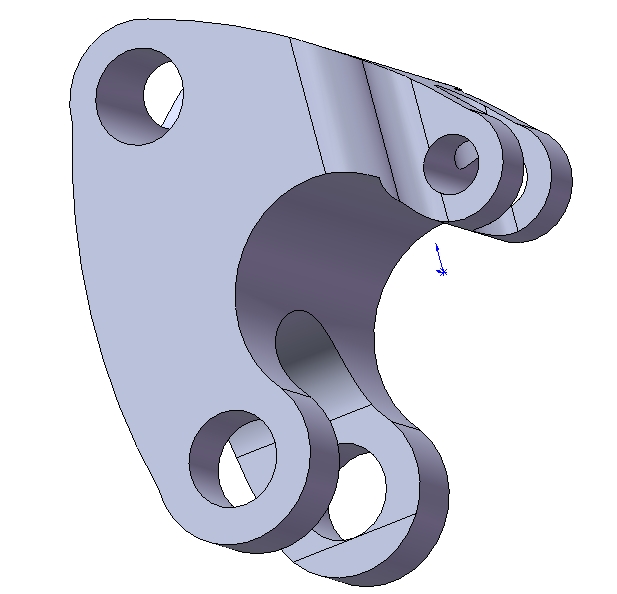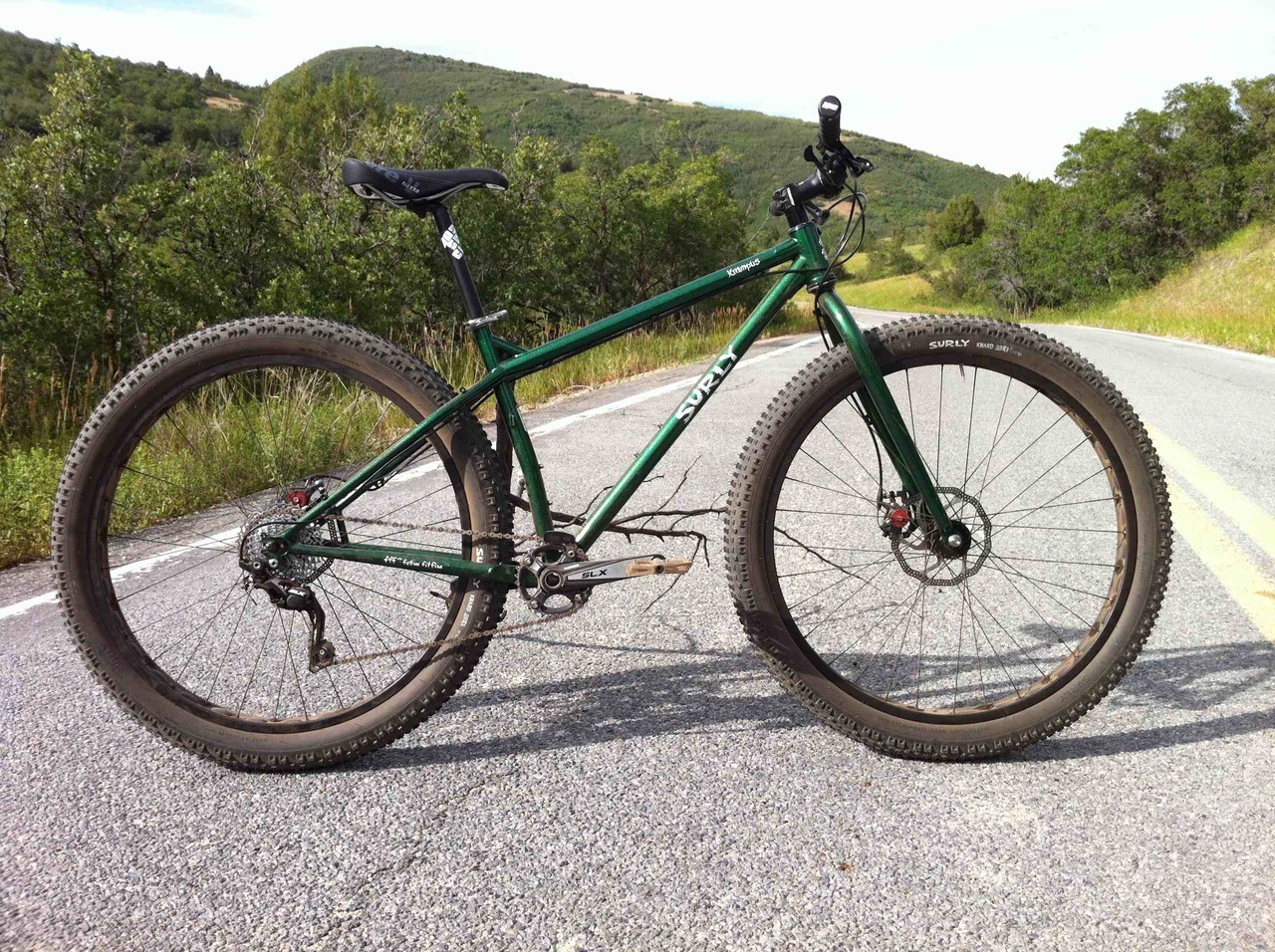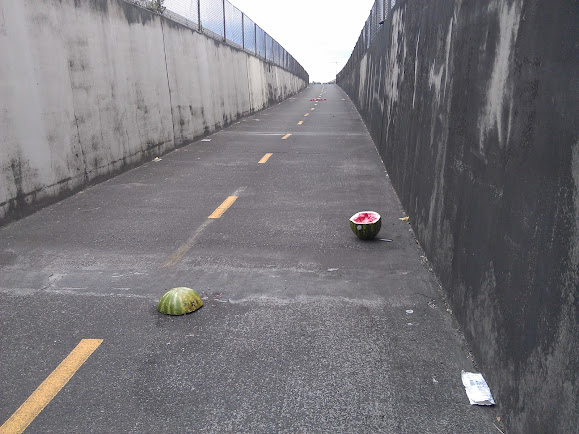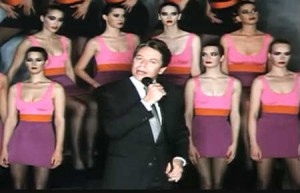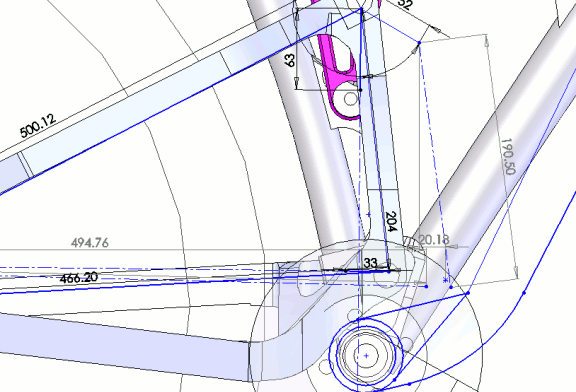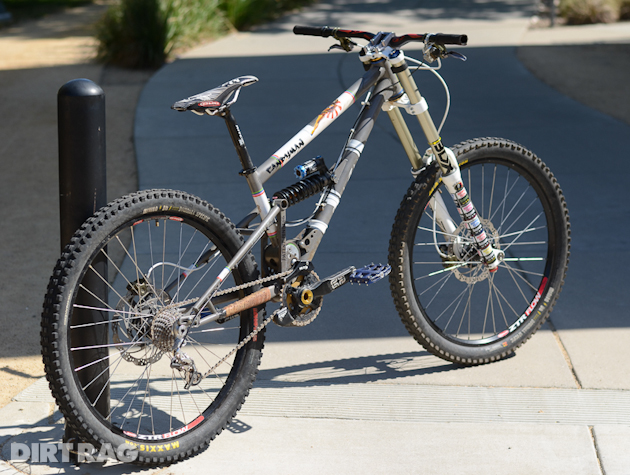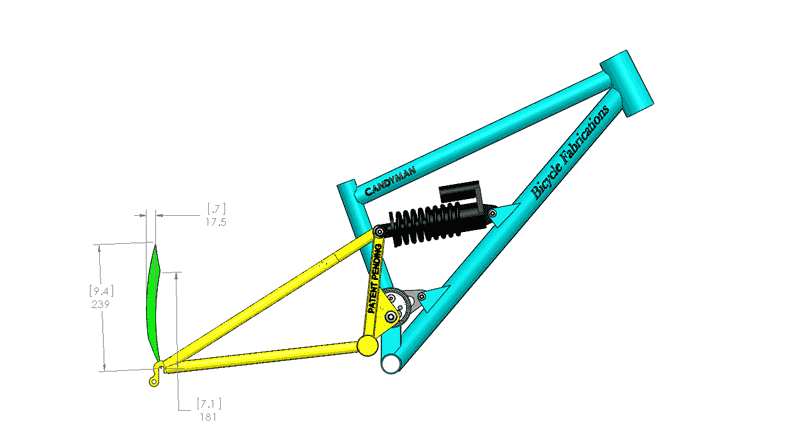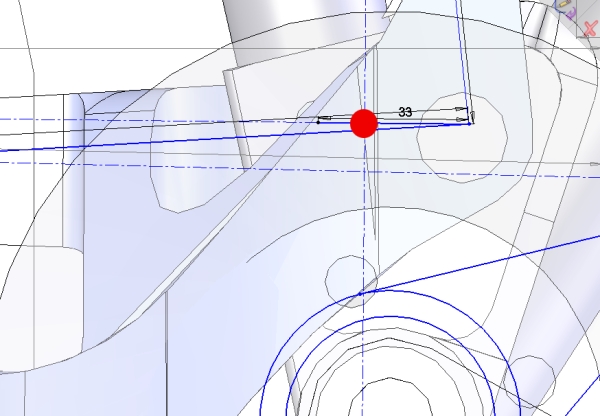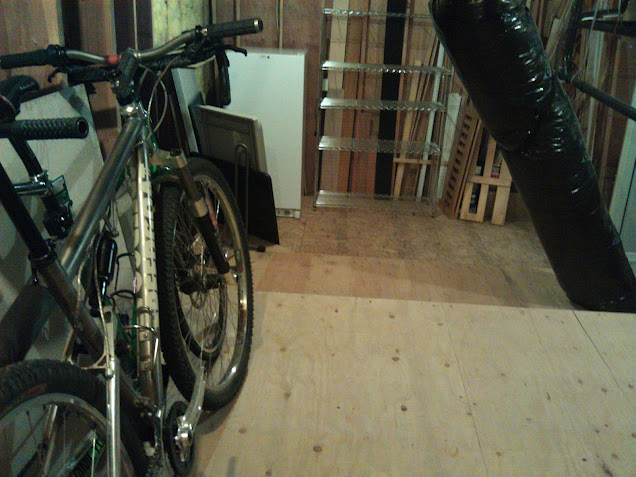
So I’m thinking about this unused part of the new house as my Secret Bike Lair. Multiple platforms give it a certain “really small punk show” vibe. Some of you will recognize that one bike as one of the first full-suspension 29ers ever made. Hell, it might be the first full-suspension 29er, though I’m sure someone built one in a garage in 1976 or so. It arrived from PA last night, and I unpacked it from a travel case after work this afternoon. Rhyno Lite 36-hole polished 29er rims, bitches. That’s how we rolled like a decade ago.
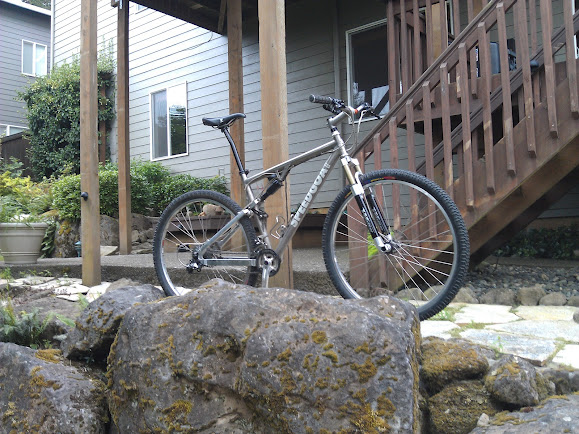
Gonna need to change that decal.
If that’s a bit from my past, my present is looking like one long night. I’d promised a deeper analysis of Danzig’s lower link and instant center for you today, but of course that was before I got hit with some late night gainful employment encroachment before writing this entry last night. As I type this now, it’s pretty damn late, and the better part of the day’s already worked me over pretty good. The whole “suspension analysis” thing takes a while to explain, and probably isn’t best done when you’re as groggy as I am right now, but a promise is a promise.
Come to think of it, I didn’t actually promise, but whatever.
So if any of what I’d written yesterday was coherent, you know that the orientation of Danzig’s lower link is opposite that of just about every other bike made. What’s that mean exactly? It means the swingarm connects to the rocker forward of the main frame’s connection. Here’s a cutaway from the patent.

Project Danzig Lower Link Orientation
Yesterday, I pinpointed the unladen instant center, and may have even explained what an instant center was. I also mentioned the importance of the line the chain makes between gears as it drives the bike along. This is important because that chain is essentially trying to pull those gears toward one another, and that’s a force that has a distinct effect on the suspension system.
Basically, my instant center–like most–aligns right at the point the chain would engage the middle ring. It’s probably the worst-kept secret out there that all full-suspension bikes are optimized for a handful of gears and not for others. Ride around in the granny ring on any full-suspension bike, and you all but feel an engineer cringing.
This isn’t to say bikes don’t work in other gear combinations–they do–but eventually you have to nail down pivot locations and all the combinations of a triple and 11-34t rear cassette are going to create more possible distinct optimal locations that you can possibly cover. So you average. Everyone basically goes with the point at which the chain intersects the middle ring, because that’s what you’re in most often. Luckily, the stuff that causes deviations when you’re in, say, the granny ring, tends to benefit climbing anyway, so life damn near works itself out when it comes to that. Dave Weagle has a phenomenal analysis of why triples actually saved full-suspension bikes from going extinct (or something like that–it’s somewhere out there on the interwebs, if you want to Google Dave’s name and “triples” or something).
So Danzig, unladen, has an instant center sitting right at that sweet spot. But, hey dumbass, you’re thinking, that’s unladen. The minute somebody sags that thing where’s your instant center go then? It can’t stay there.
Right you are.
Where Danzig’s instant center goes is backward, right along the line of the chain.
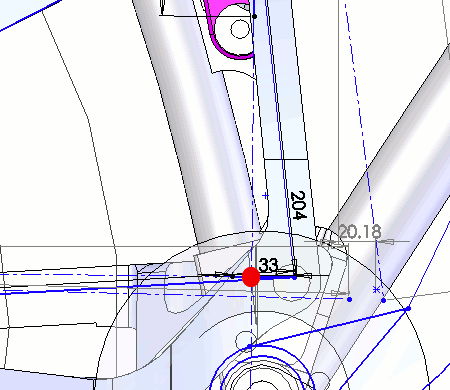
What the hell does that have to do with anything? We’ll kick that around tomorrow. Probably. No promises.


